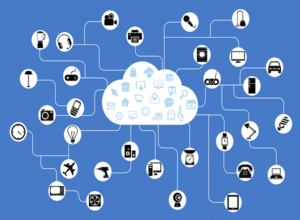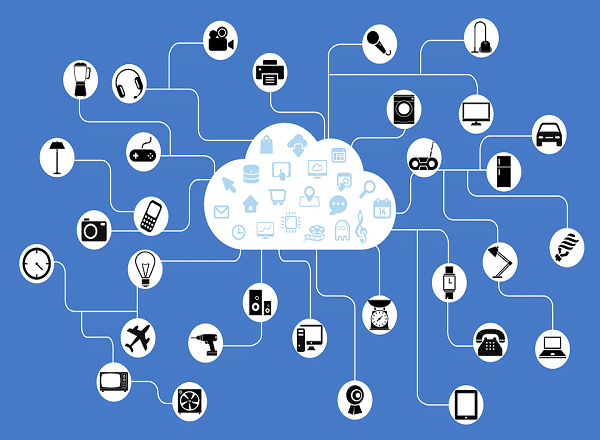Doing computation directly at the edge node helps reduce data traffic, improve real-time response as well as optimise data storage.
Curated by Vinay Prabhakar Minj

The past three industrial revolutions helped shaped and transformed our modern society. Now we are entering the fourth industrial revolution or Industry 4.0. Over these years, we have evolved from human-to-human interaction to Internet of things (IoT), i.e. machine -to-machine communication.
Now, the data from different machines are being sent to the cloud, which enable us to run a lot of analytics and handle different use cases. But as the number of connected devices are increasing, we are also seeing the need for more and more edge analytics because we don’t want all the data to go to the cloud.
Edge computing
Earlier the use cases were simple and the number of devices was less, so we had the choice to move all the data to the cloud. Now, we want to do some analysis right at the edge.
Edge computing refers to shifting of the computing/analysis from the server to somewhere closer to the sensors. This shift helps reduce data traffic, improve real-time response as well as optimise data storage.
Difference Between Cloud, Fog and Edge computing
- Cloud is a computing platform where the data sent by the sensors is processed.
- At the edge layer, large volume of real-time data processing and analysis happens at the source itself i.e. sensors.
- Fog layer consists of the local network, where the data from the apps, or sensors of the edge layer is analysed for a controlled response.
Three Reasons for Doing Edge Analytics
- Lack of time for sending data to the cloud for processing
- High cost of sending data from the devices to the cloud
- Large volume of data.
Doing computation directly at the edge node is apt for video analytics and non-ML (Machine Learning) applications.
How Edge Computing is Proving to be Beneficial?
- A lot of use cases of Industrial IoT typically have data from different sources, or machines. Once they get stored in the cloud after edge analytics, then the ability to do a lot of analytics and learnings (such as predictive and prescriptive) improves.
- This also leads to the creation of new business models. From the earlier fixed-price model, now software development is happening in a subscription-based model where a fixed fee is charged for the device node, and based on the number devices/machines, the fee is decided on a monthly basis.
IIoT Value Chain Includes:
- Sensors: These measure various physical parameters like temperature, humidity, pressure, motion, proximity, etc.
- Wireless connection: Most of the projects nowadays use wireless technologies like Wi-Fi, LoRa, ZigBee, BLE, 6LoWPAN for data collection.
- Communication protocols: These include Modbus, TCP/IP, HTTPS, etc. and multiple I/O interfaces (analog and digital) like RS232 and RS485.
- Cloud platform: Data aggregation for real-time analysis that happens using AWS, Microsoft Azure, IBM Blue Mix, or any other third party cloud service.
“EDGE COMPUTING LEADS TO THE CREATION OF NEW BUSINESS MODELS. FROM THE EARLIER FIXED-PRICE MODEL, NOW SOFTWARE DEVELOPMENT IS HAPPENING IN A SUBSCRIPTION-BASED MODEL”
Real-life Use Cases of Edge Computing
- Rust analysis: This use case refers to the identification of rusting in an industrial environment to avoid any breakdowns or failures of machines. So, NVIDIA has come up with a chipset solution called JETSON TX2 that provides deep learning/machine learning at the edge.
This solution enables users to attach IR cameras and perform edge analytics right at the device. Due to framework limitations, the compute power of the JETSONTX2 is comparatively low than the compute power of the cloud. Therefore, the analytics is split into two-three phases.
First a model is generated from the data analysis. Then this model is put through an inference engine, where the inferences are captured (for matching of requirements) during a live process.
After this, the model is downloaded into the required device. Through the learning process, the model keeps on evolving and maturing and thus provide increasingly better real-time data.
The NVIDIA JETSON TX2 consists of 256 cores with each having 64bit GPUs, memory, CSI camera, LCD and Wi-Fi.
In the future, it is expected to do object scanning using ML, anomaly detection in machines such as unwanted vibrations, machine identification using QR scanning and integrating thermal sensors for temperature profiling/prediction.
- Smart Solar LED Street Lighting LED Control Application: The technology used in this solution is sub GHz Mesh Topology and GIS mapping. This mesh solution provides the ability of mesh hopping across 150 nodes. This means that only one gateway is required to monitor all the nodes.
A Linux based solution helps in implementing various edge-based functions for administering the data and consolidating it back to the cloud.
Benefits of this smart solar street lighting solution include a centralised monitoring and control system for long-distance/remote communications and customised schedules (according to the time of the day). The solution is environment-friendly and promises zero electricity costs.
- Smart Retail Shelf: It uses sub GHz mesh technology for multiple shelves that are all connected to a single gateway. The solution works by assessing the weight of the shelf with several sensors incorporated into it. Based on the weight of the shelf that is detected, the items then can be counted and maintained. The data then goes to the edge, from where it is sent to the server for processing and the final data is sent to the user through which items that are to be replenished can be known.
As the availability of the items on the shelf is a major driver for the retail business, quick inventory replenishments are required to compensate any stock-outs.
Another benefit is that this solution provides real-time alerts and tracking of inventory for improved management and decision making.
- Industrial Worker Safety Watch: The technology used is BLE and LoRa. The benefits of this solution include real-time monitoring of worker health such as body temperature and heart rate. This watch enhances the safety of the worker working in a stressful/hazardous environment and thus prevents occupational accidents and workplace injuries.
Conclusion: In some cases edge is apt, and for some, it is cloud or fog. Depending on the use case, one needs to decide on what architecture is correct and should be implemented.
About the Author
This is a transcript of a speech presented by Shaun Mitra, Investor & Chief Business Officer, Technosphere; and Bhaskar Rao, Founder & CEO, Technosphere. They delivered the speech at the IOTSHOW.IN 2019 held in Bengaluru.











